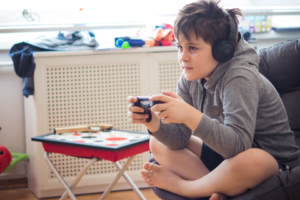Teaching Photography Principles with Smartphones

Mobile technology has broad utility in contemporary classrooms. Teachers and administrators might find smartphones to be complicated nuisances at times. Despite this, the worth of smartphones as instructional tools can’t be denied. One particularly useful application of smartphones is in teaching the basic principles of photography.
Not all students carry smartphones, but a significant proportion of them do. Young smartphone users tend to take many pictures per day. If they already are using the devices to such an extent, schools can take advantage of this. In doing so, schools can teach a transferrable skill set to a far greater number of students than would have been possible just a decade ago. They can do this at a far lower cost as well.
Traditionally, photography classes have been limited by equipment. Schools only have been able to supply so many cameras. A limited number of students have been able to use their own. Advancements in technology have reduced reliance on expensive and cumbersome processes for taking and developing pictures. The leap from film to digital formats started this downsizing. Now it continues, as students carry powerful cameras with them at all times, thus displacing the need for pricey DSLR cameras.
Smartphones have yet to replace the range offered by true DSLR cameras, although they have more than caught up with beginner point-and-shoot models. While more ambitious photography students will need to hone their skills using DSLRs, the majority of students can use smartphones to learn everything they will ever need to learn about capturing quality images. Using smartphones to teach photography makes this skill set available to more of the student population than can be reached by using DSLRs. This is as much of an advantage as the savings offered by using student-owned smartphones.
Students can use their own smartphones to do much more than take mirror selfies. Teachers can introduce students to composition concepts such as the rule of thirds, which can be readily incorporated into shooting with smartphones. Students might not be aware of simple balancing techniques that can improve the impact of the images they shoot. A teacher with even a general understanding of photography principles can demonstrate how to use lighting to enhance images, or at least how to prevent poor lighting from ruining images. Many students will never have attempted to adjust the ISO on their smartphones. Learning to do this can vastly improve their shots. Instilling a class with even these simple ideas can change the way students think about photography. Ideally, it can open a few to the notion of photography being a form of art they can explore.
The advantages extend beyond a formal photography class. Smartphones take images with high enough resolution to use in yearbooks or other school publications. Yearbooks are only as memorable as the images in them. With so many students carrying cameras, the potential for capturing candid images grows exponentially. The yearbook staff need not rely solely on the two or three students who might be carrying DSLRs to school functions. However, the students carrying smartphones still should be exposed to general photography principles to ensure they capture the best possible images.
Giving middle or high school students a once per week elective on smartphone photography can help them get more out of the devices they already use. School officials would have to decide how to regulate use of smartphones in buildings with general bans on use during school hours. Passes of some sort for students currently taking the course or on the yearbook staff might address this. Schools have a splendid opportunity to give students access to a lifelong skill set. What students learn on their phones can be applied to any other cameras. Even if students don’t trade their smartphones for dedicated cameras, they can improve the quality of the pictures they take, all for a minimal investment on the part of schools.
Written by Jeff Hartmann



